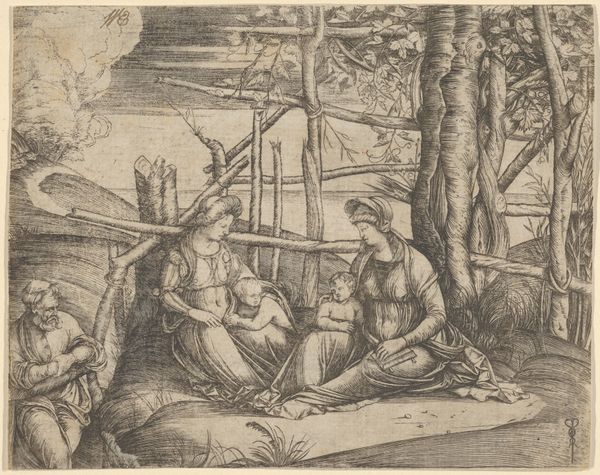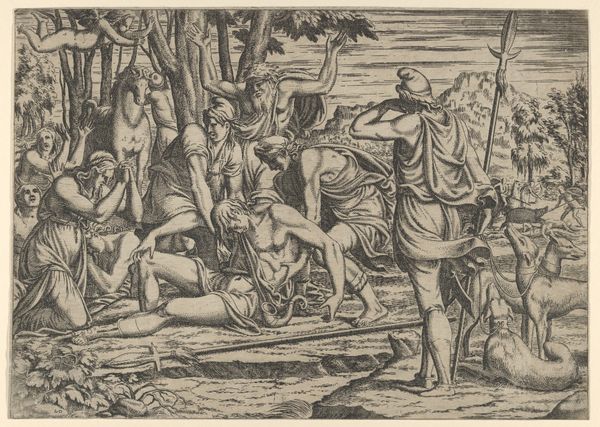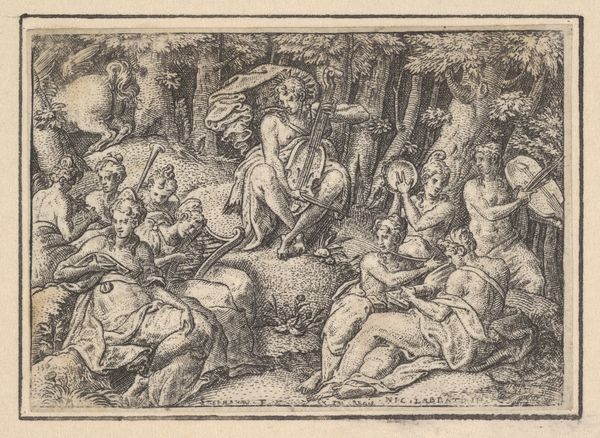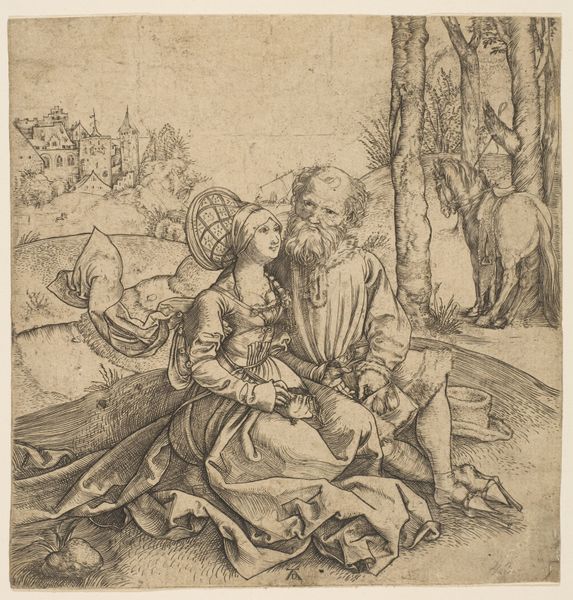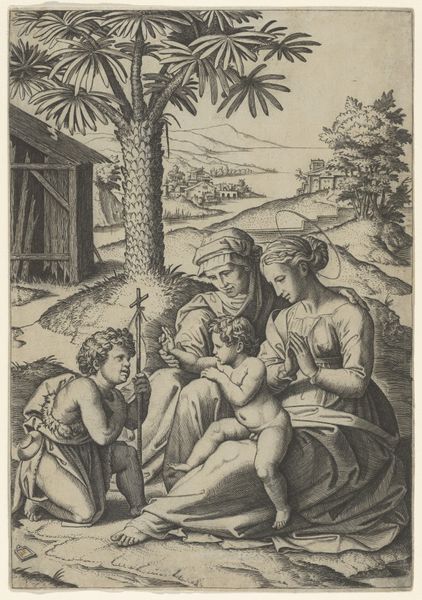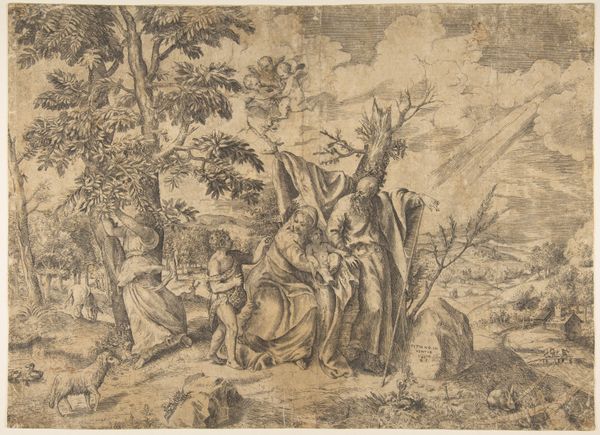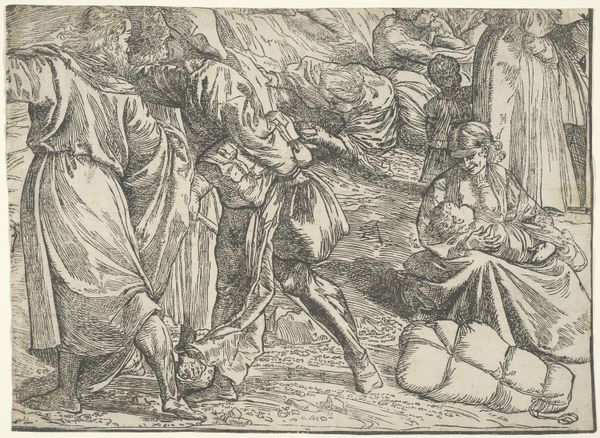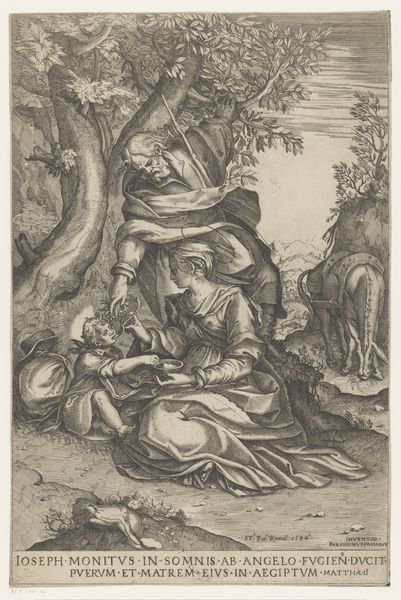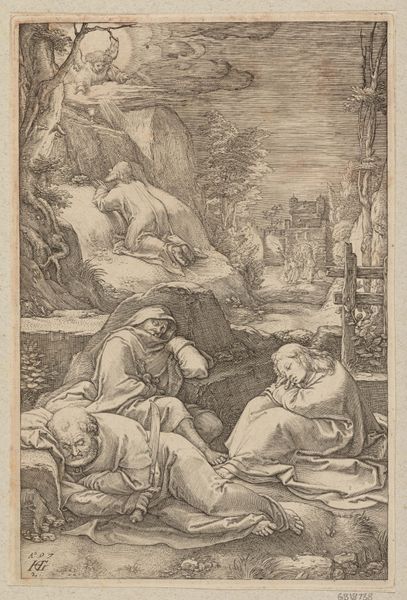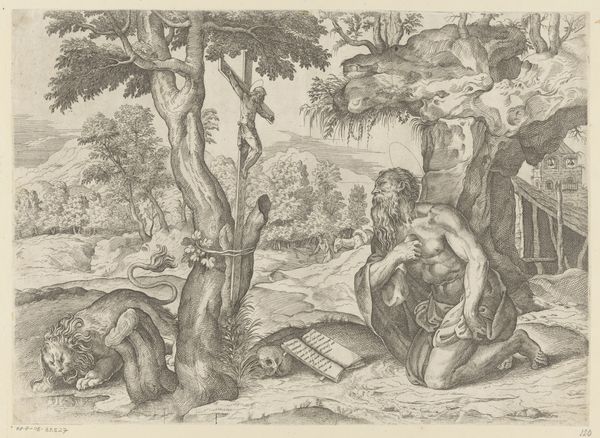
The Holy Family with St. Elizabeth and the Infant St. John c. 1499 - 1501
0:00
0:00
print, engraving
#
ink drawing
#
medieval
# print
#
landscape
#
figuration
#
line
#
history-painting
#
italian-renaissance
#
engraving
Dimensions: Image Size: 5-1/8 x 6-1/4 in. (13.0 x 15.9 cm)
Copyright: Public Domain
Curator: This print, “The Holy Family with St. Elizabeth and the Infant St. John," dates back to around 1499-1501, crafted by Jacopo de' Barbari. It’s held here at the Minneapolis Institute of Art. What strikes you first about this engraving? Editor: A sense of quiet, almost melancholy. The figures seem contained, but there’s a vastness suggested by the landscape, though rendered entirely in delicate lines. The ink gives it a silvery, dreamy quality, no? Curator: Absolutely. Barbari's work comes at a fascinating intersection. He’s often situated within the Italian Renaissance but with influences from Northern European printmaking. Consider the theme, right? The Holy Family wasn’t just about piety; it reflected anxieties around lineage, power, and female agency in early modern Europe. Editor: And these women! Strong, present... though the scale of the children almost throws things off. The older man watching on the left… such a mood. This makes me think about how art functions within systems of representation that can both uplift and limit. Do we see reflections of those limits, even in ostensibly sacred depictions? Curator: Definitely. Look at the idealized, almost generic features, contrasted with the specific rendering of textures and foliage. Art historians debate Barbari’s access to actual models. Also consider how these religious narratives served political purposes, reinforcing dynastic claims and social hierarchies. Editor: Hmm, dynastic claims manifested in ink and paper. I like that. This piece reminds me that stories—visual, textual—become how we collectively imagine, or are instructed to imagine, history. It seems vital to interrogate both the narratives themselves and the conditions from which they arise. Curator: Precisely. By thinking critically about who is represented, how, and why, we challenge conventional perspectives and forge a more inclusive and nuanced understanding of our world and its history. Editor: Agreed! I feel like my gaze on this artwork and so many others will be refreshed from here on.
Comments
minneapolisinstituteofart almost 2 years ago
⋮
Like many of the prints in the Jones Collection, this work has a long and distinguished history. After its creation at the turn of the 16th century, it resided in six different collections before it entered the British Museum in 1845. The New York print dealer Frederick P. Keppel later purchased the work from the British Museum as a duplicate impression. The gallery later sold it to Herschel V. Jones in 1916. The print remained with Jones's descendents until it entered the collection of the Minneapolis Institute of Arts as part his bequest in 1928.
Join the conversation
Join millions of artists and users on Artera today and experience the ultimate creative platform.
